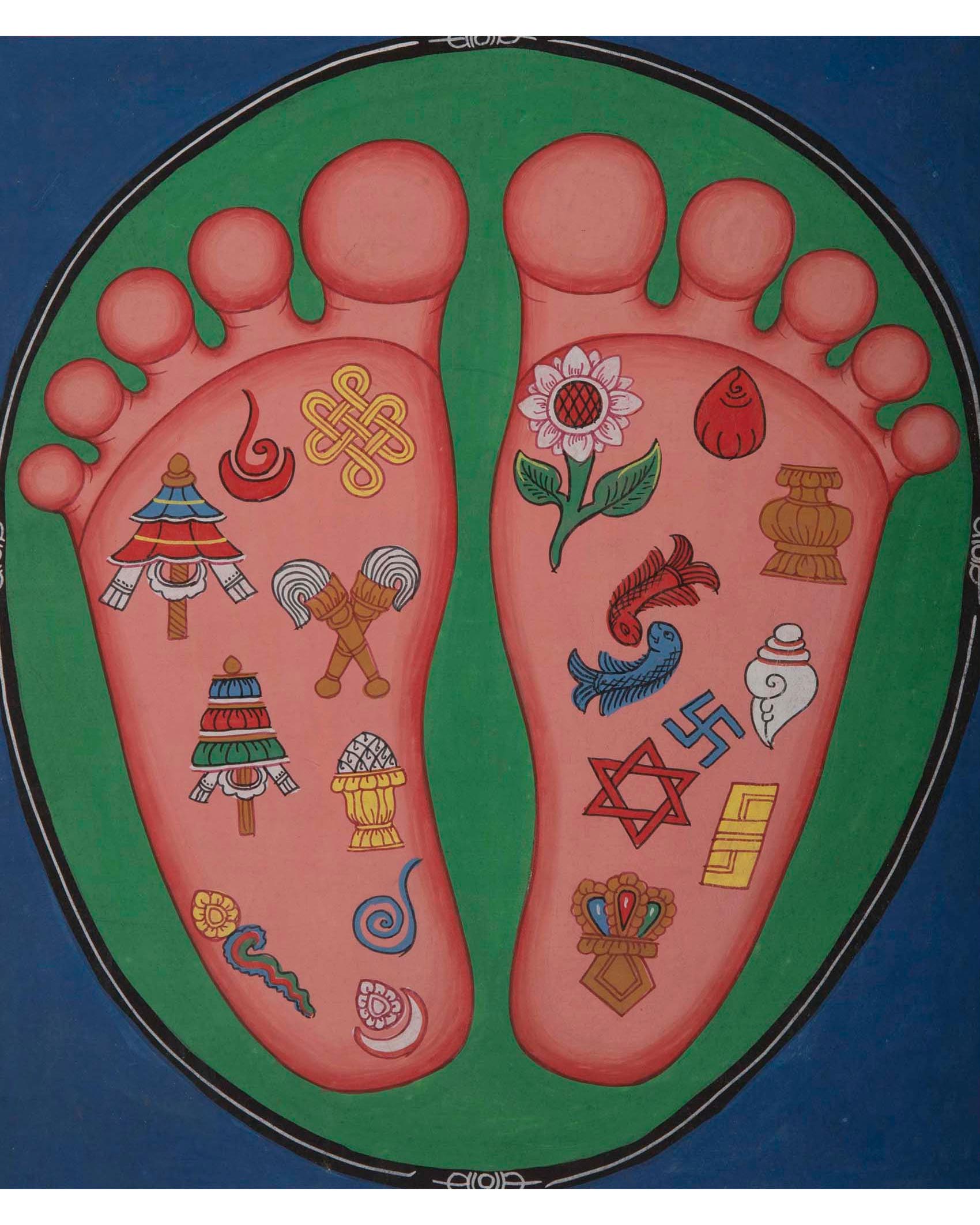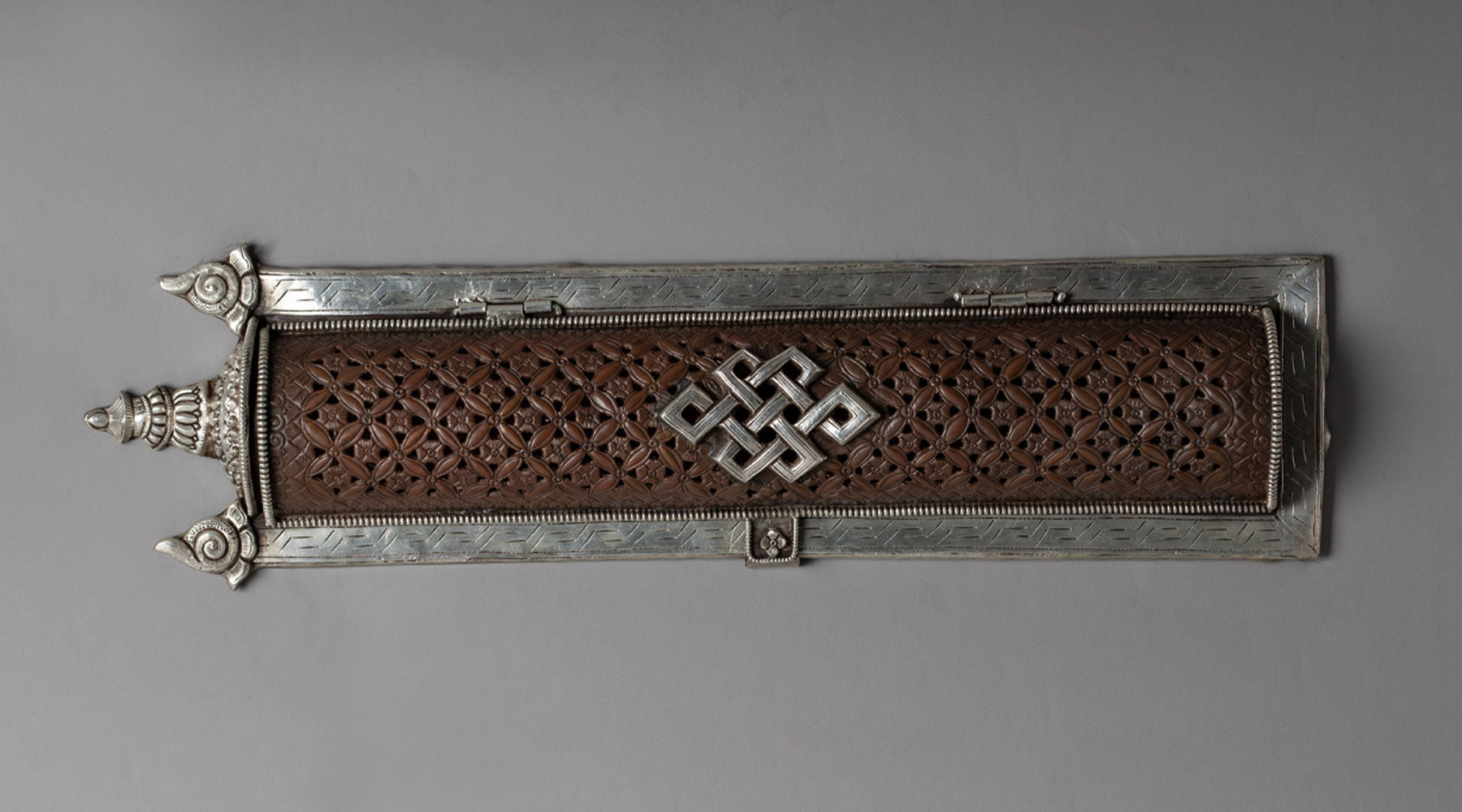The Symbolism and Significance of the Eternal Knot in Buddhist Philosophy
The Eternal Knot, Wisdom knot, buddha knot, infinite knot or the Endless Knot, stands as a profound Buddhist symbol, encapsulating the core of Buddhist philosophy and cosmology. Beyond being a cornerstone in Buddhist art, it symbolizes the interconnectedness of all things, the cyclical essence of life, and the boundless wisdom of the Buddha. This exploration delves into the symbolism, historical roots, manifestation in Buddhist art and practice, and its contemporary cultural significance.
Key Takeaways
- The Eternal Knot is a significant symbol in Buddhism, representing the interconnectedness of life and the universe.
- It embodies the Buddhist concepts of samsara (the cycle of birth, death, and rebirth) and karma (the law of cause and effect).
- The knot's design, with no beginning or end, symbolizes the infinite wisdom of the Buddha.
- It is one of the Eight Auspicious Symbols in Buddhism, each carrying profound spiritual significance.
Tibetan Eternal Knot: Origins and Historical Context
Ancient Origins:
The roots of the Eternal Knot extend into ancient Indian culture, where it symbolized auspiciousness and harmony. Its incorporation into Buddhism reflects a harmonious blend of indigenous Indian traditions with Buddhist ideology.
Buddhist Symbolism Evolution:
Over the centuries, the Eternal Knot underwent a transformative journey in Buddhist symbolism. It evolved, assimilating philosophical concepts and gaining profound spiritual significance. Now, it serves as a visual metaphor representing the Buddha's teachings and the universe's interconnected fabric.
Evolution of the Eternal Knot in Buddhism
| Period | Significance |
| Ancient India | Symbol of auspiciousness and harmony |
| Early Buddhism | Representation of interconnectedness |
| Later Buddhism | Symbol of samsara, karma, and Buddha's wisdom |
Symbolism in Buddhism

Click here to view our Eternal Knot Thangka
Interconnectedness of Existence:
The Eternal Knot, characterized by its perpetual loops without a clear starting or ending point, symbolizes the interconnected nature of all elements in the universe. It embodies the Buddhist principle of Pratītyasamutpāda, conveying the idea of "dependent origination" or "interdependent co-arising." This concept asserts that all phenomena arise in reliance on others, emphasizing the intricate, interconnected web of existence where nothing exists in isolation.
Samsara's Endless Cycle:
Additionally, the Eternal Knot is a poignant symbol of samsara, the ceaseless cycle of birth, death, and rebirth experienced by beings. It mirrors the Buddhist belief in the transient nature of physical existence and the possibilities for rebirth and rejuvenation. Through its continuous pattern, the knot encapsulates the perpetual cycle of life, death, and rebirth, lacking a distinct beginning or conclusion.
Karma's Intricate Weave:
The interweaving lines of the knot vividly depict the complex web of karma, embodying the law of cause and effect. Every action or intention contributes to future consequences intricately woven into the fabric of one's life. The Eternal Knot symbolizes how these karmic connections shape the rhythm of samsara, exerting influence over the trajectory of an individual's existence.
Buddha's Infinite Wisdom:

Click here to view our Buddha Feet Thangka
Designed without a discernible start or finish, the Eternal Knot signifies the boundless wisdom and omniscience of the Buddha. It represents the eternal truth embedded in the Dharma (the Buddha's teachings) and the limitless compassion emanating from an enlightened mind. The knot, through its perpetual looping, visually communicates the timeless wisdom of the Buddha and the all-encompassing nature of Buddhist teachings.
The Eternal Knot in Buddhist Art: Buddhist Karma Symbol
Artistic Representation:
In Thangka paintings, the Eternal Knot, known as Srivatsa in Sanskrit, is meticulously depicted with attention to detail. It often manifests as an endless, interwoven pattern without a discernible start or finish. Beyond its aesthetic appeal, this intricate design symbolizes the interconnected nature of all things and the cyclical essence of life, in alignment with Buddhist teachings.
Placement in Thangkas:
Strategically positioned in Thangka paintings, the Eternal Knot finds its place in borders surrounding central figures or within the aureoles and halos encircling deities. At times, it coexists with other symbols, particularly those from the Eight Auspicious Symbols, contributing to the rich visual narrative of these artworks.
Synergy with Other Symbols:
Within Buddhist art, the Eternal Knot frequently finds companionship with other symbols like the lotus (representing purity), the wheel of Dharma (symbolizing Buddha's teachings), and the parasol (signifying protection). These amalgamations form intricate tapestries of meaning, conveying multiple layers of Buddhist philosophy and enriching the visual narrative.
Artistic Styles and Variations:
The colors and materials chosen for portraying the Eternal Knot also convey significance. Gold, prevalent in Tibetan thangkas, symbolizes the purity and sacredness of teachings, while vibrant colors used in the knot's depiction represent various facets of the enlightened mind.
In sculptures and temple art, the Eternal Knot often appears carved on prayer wheels, temple doors, and ritual objects. Its presence serves as a visual reminder of Buddhist teachings and the interconnected nature of the universe.
Symbolic Meanings of Colors in Thangka Paintings
| Color | Symbolic Meaning |
| Gold | Purity, Sacredness, Enlightenment |
| Blue | Wisdom, Openness, Serenity |
| Red | Energy, Strength, Compassion |
| White | Purity, Simplicity, Liberation |
| Multicolored | Union of Wisdom and Compassion, Harmony |
The Eternal Knot and the Eight Auspicious Symbols

Click here to view our Eight Auspicious Symbols
Overview of the Eight Auspicious Symbols in Buddhism
In Buddhism, the Eternal Knot is part of the Eight Auspicious Symbols, representing various aspects of Buddhist teachings. Each symbol carries a unique significance; collectively, they embody the essence of the Buddha's path.
The Significance of Each Tibetan Buddhism Symbol
- Lotus Flower: A symbol of purity and enlightenment, it rises gracefully above the muddy waters, representing transcendence.
- Conch Shell: Signifying the dissemination of the Buddha's teachings, it echoes the far-reaching impact of wisdom.
- Parasol: Emblematic of protection and royalty, it offers a visual metaphor for safeguarding spiritual truths.
- Victory Banner: Symbolizing the triumph of Buddhism and the conquest over adversities, it stands as a testament to resilience.
- Golden Fish: Representative of happiness and liberation from the ocean of suffering embodies a sense of freedom.
- Treasure Vase: Symbolizing both spiritual and material abundance, it signifies the richness found on the path of enlightenment.
- Wheel of Dharma: Denoting the essence of the Buddha's teachings and the journey toward enlightenment, it represents the cyclical nature of existence.
- Eternal Knot: Embodying interconnectedness and infinite wisdom, it visualizes the profound unity and boundless insight within Buddhist philosophy.
The Eternal Knot in Meditation and Practice
Use in Meditation:
In meditation, the Eternal Knot serves as a focal point, aiding practitioners in contemplating the interconnectedness of life and the universe. Its intricate design calms the mind and facilitates a deeper understanding of Buddhist teachings.
Incorporation in Rituals and Ceremonies:

Click here to view our Incense Burner with Eternal Knot
Frequently adorning ritual objects, the Eternal Knot plays a significant role in various Buddhist ceremonies. It is believed to bestow blessings of harmony, auspiciousness, and a profound connection to the Dharma.
In today's globalized world, the Eternal Knot is widely recognized as a universal symbol of harmony, unity, and the interconnected nature of all beings. Resonating across different cultures and beliefs, it conveys a message of peace and interconnectedness.
The Eternal Knot in Buddhism transcends time and culture, encapsulating the fundamental principles of interconnectedness, the cyclical nature of existence, and the infinite wisdom of the Buddha. Its presence in Buddhist art, philosophy, and practice continues to inspire and guide practitioners on their spiritual journey. As a symbol of unity and harmony in contemporary culture, the Eternal Knot underscores its universal appeal and enduring significance.














